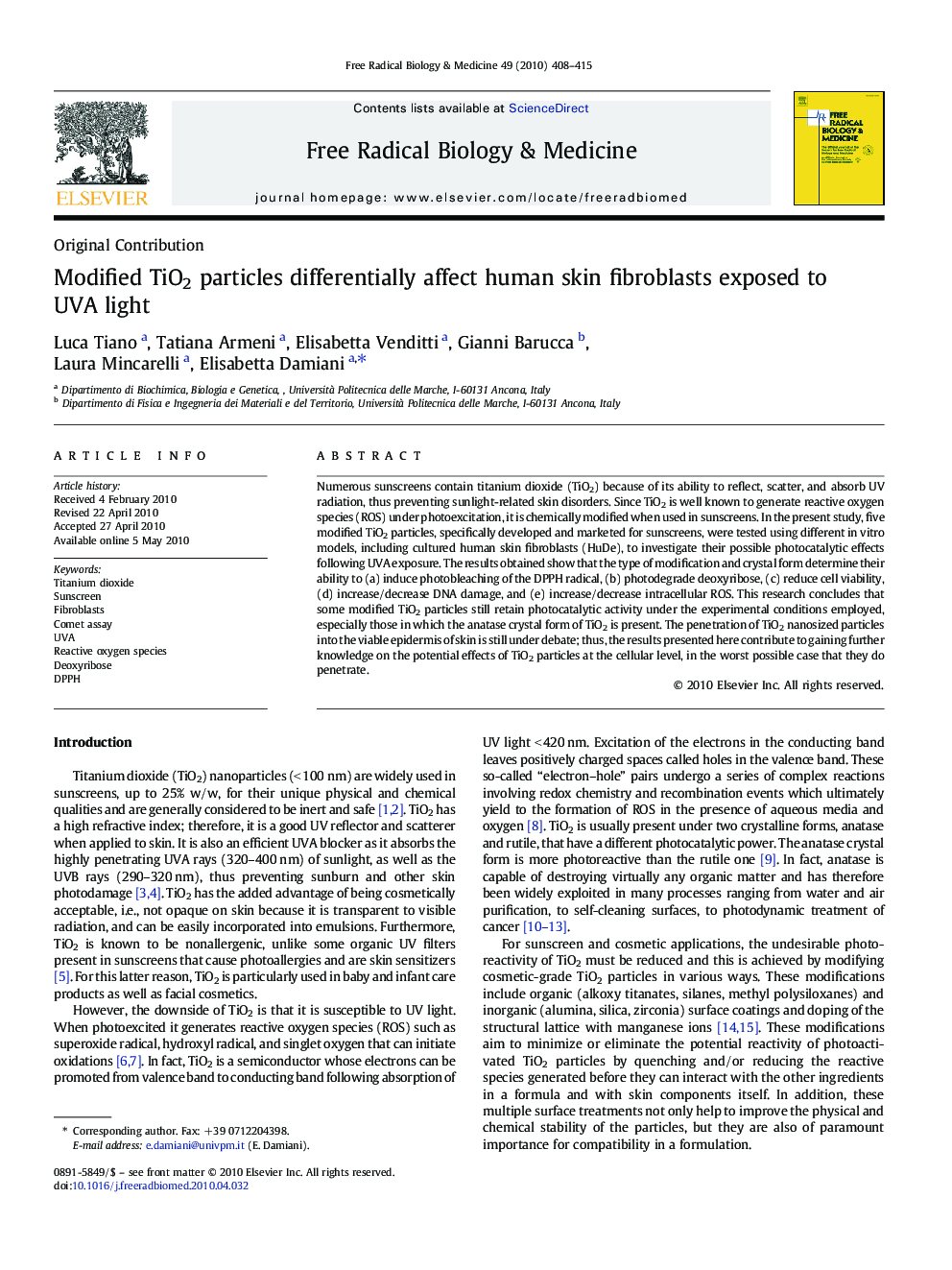| Article ID | Journal | Published Year | Pages | File Type |
|---|---|---|---|---|
| 1909439 | Free Radical Biology and Medicine | 2010 | 8 Pages |
Numerous sunscreens contain titanium dioxide (TiO2) because of its ability to reflect, scatter, and absorb UV radiation, thus preventing sunlight-related skin disorders. Since TiO2 is well known to generate reactive oxygen species (ROS) under photoexcitation, it is chemically modified when used in sunscreens. In the present study, five modified TiO2 particles, specifically developed and marketed for sunscreens, were tested using different in vitro models, including cultured human skin fibroblasts (HuDe), to investigate their possible photocatalytic effects following UVA exposure. The results obtained show that the type of modification and crystal form determine their ability to (a) induce photobleaching of the DPPH radical, (b) photodegrade deoxyribose, (c) reduce cell viability, (d) increase/decrease DNA damage, and (e) increase/decrease intracellular ROS. This research concludes that some modified TiO2 particles still retain photocatalytic activity under the experimental conditions employed, especially those in which the anatase crystal form of TiO2 is present. The penetration of TiO2 nanosized particles into the viable epidermis of skin is still under debate; thus, the results presented here contribute to gaining further knowledge on the potential effects of TiO2 particles at the cellular level, in the worst possible case that they do penetrate.
